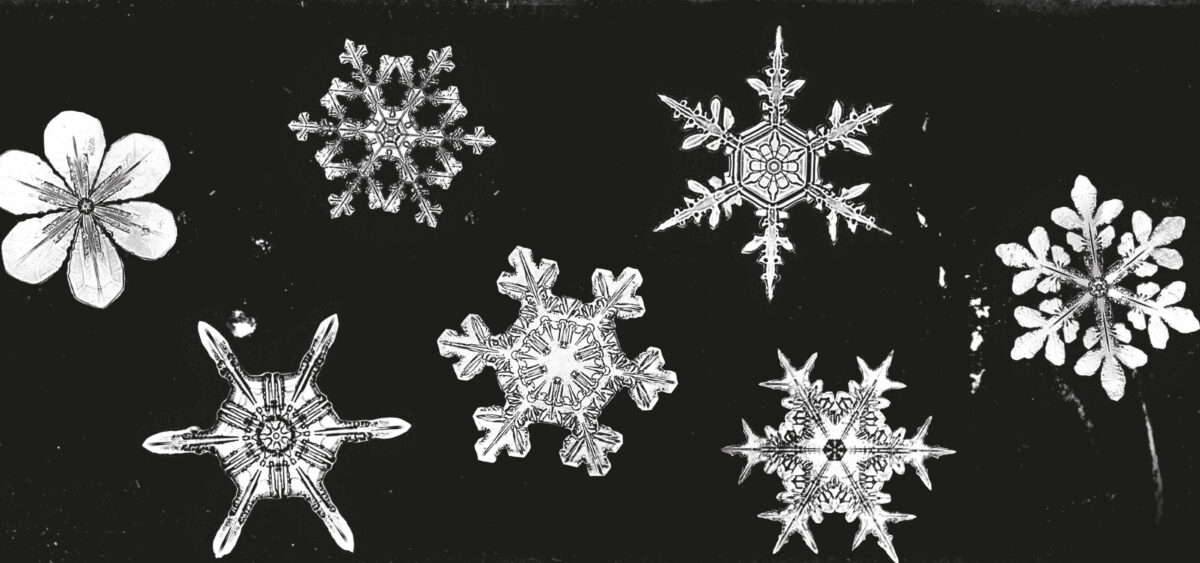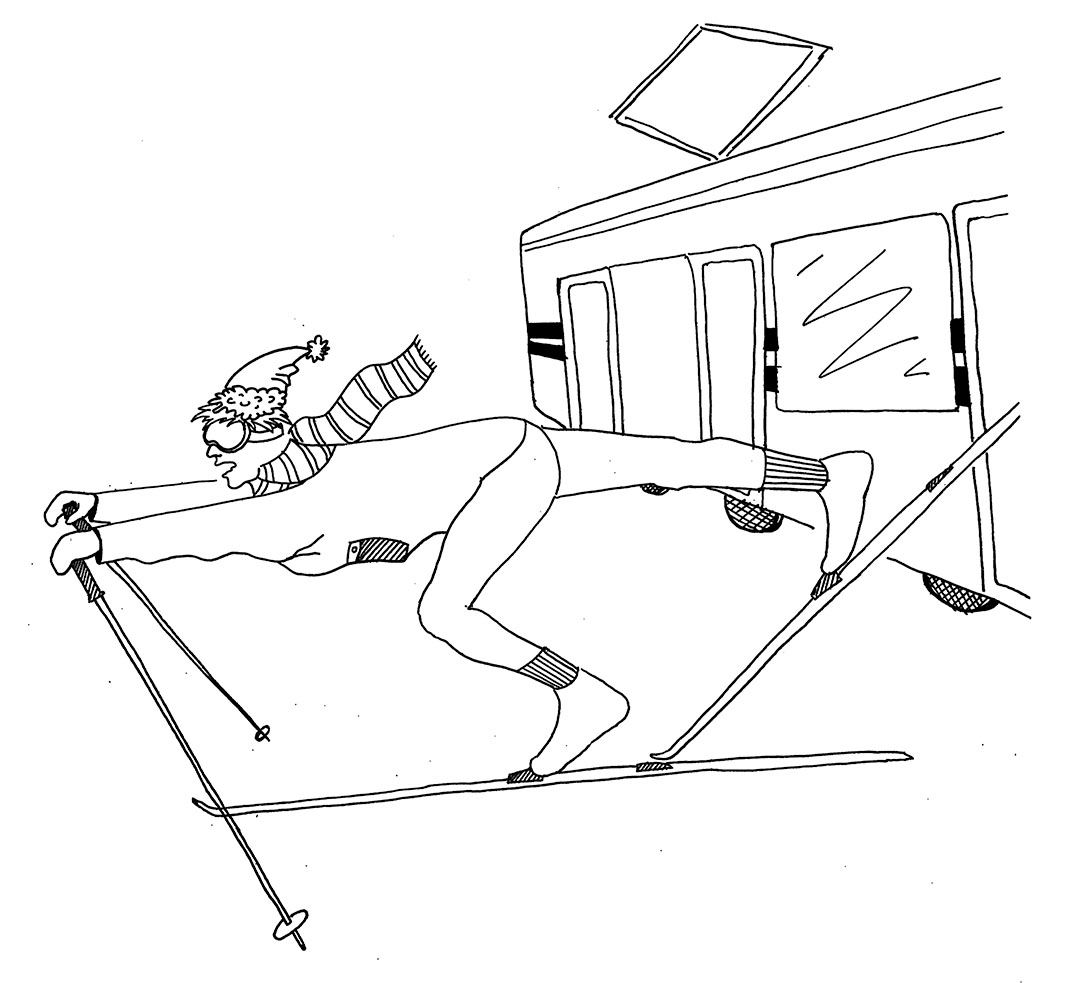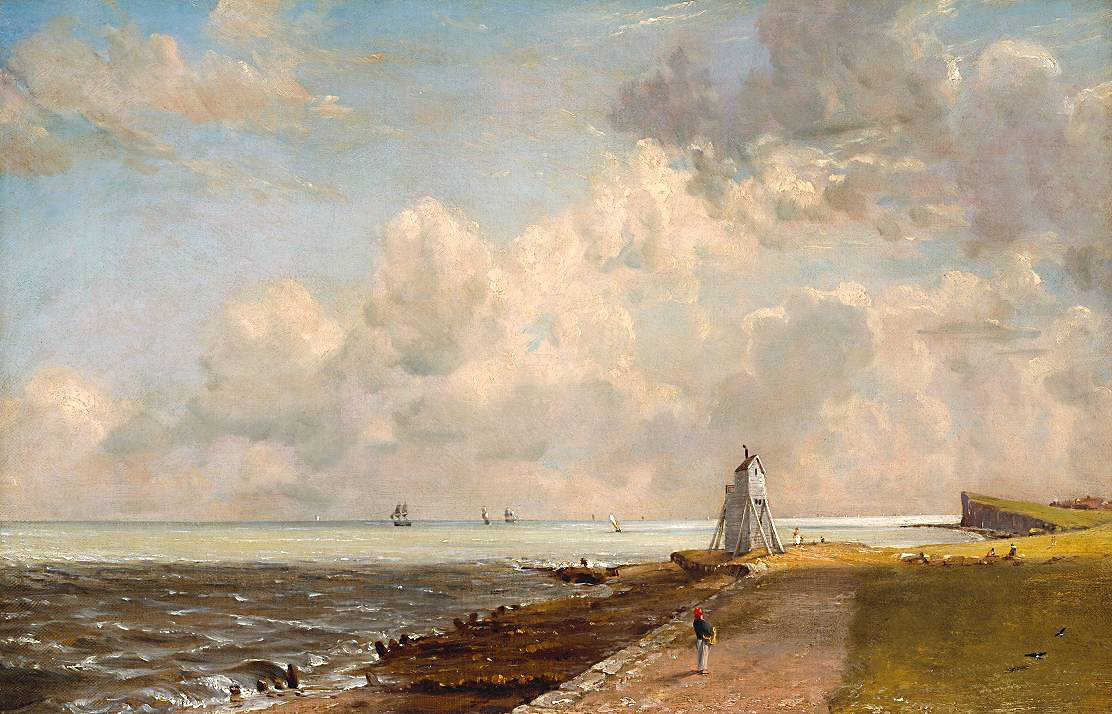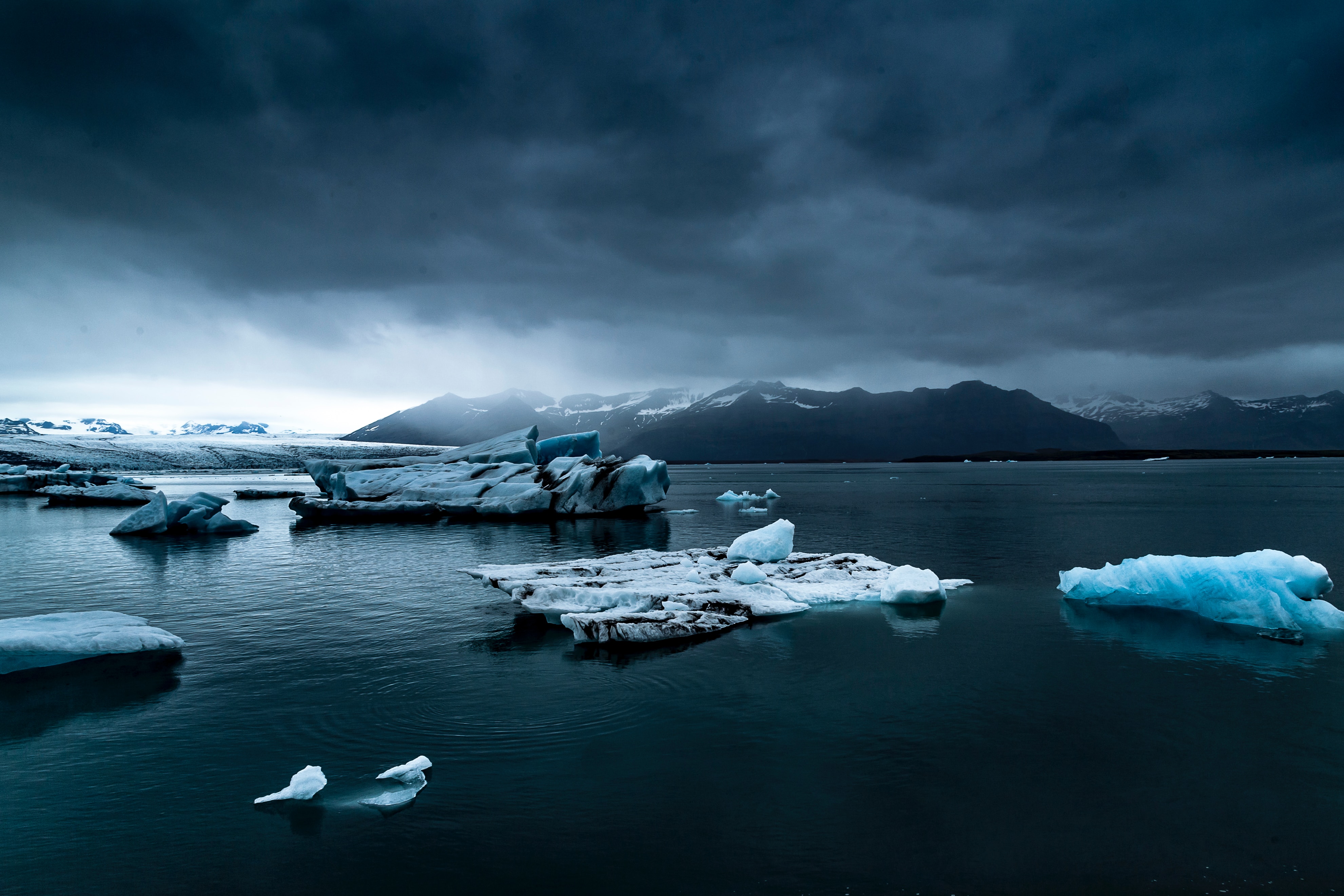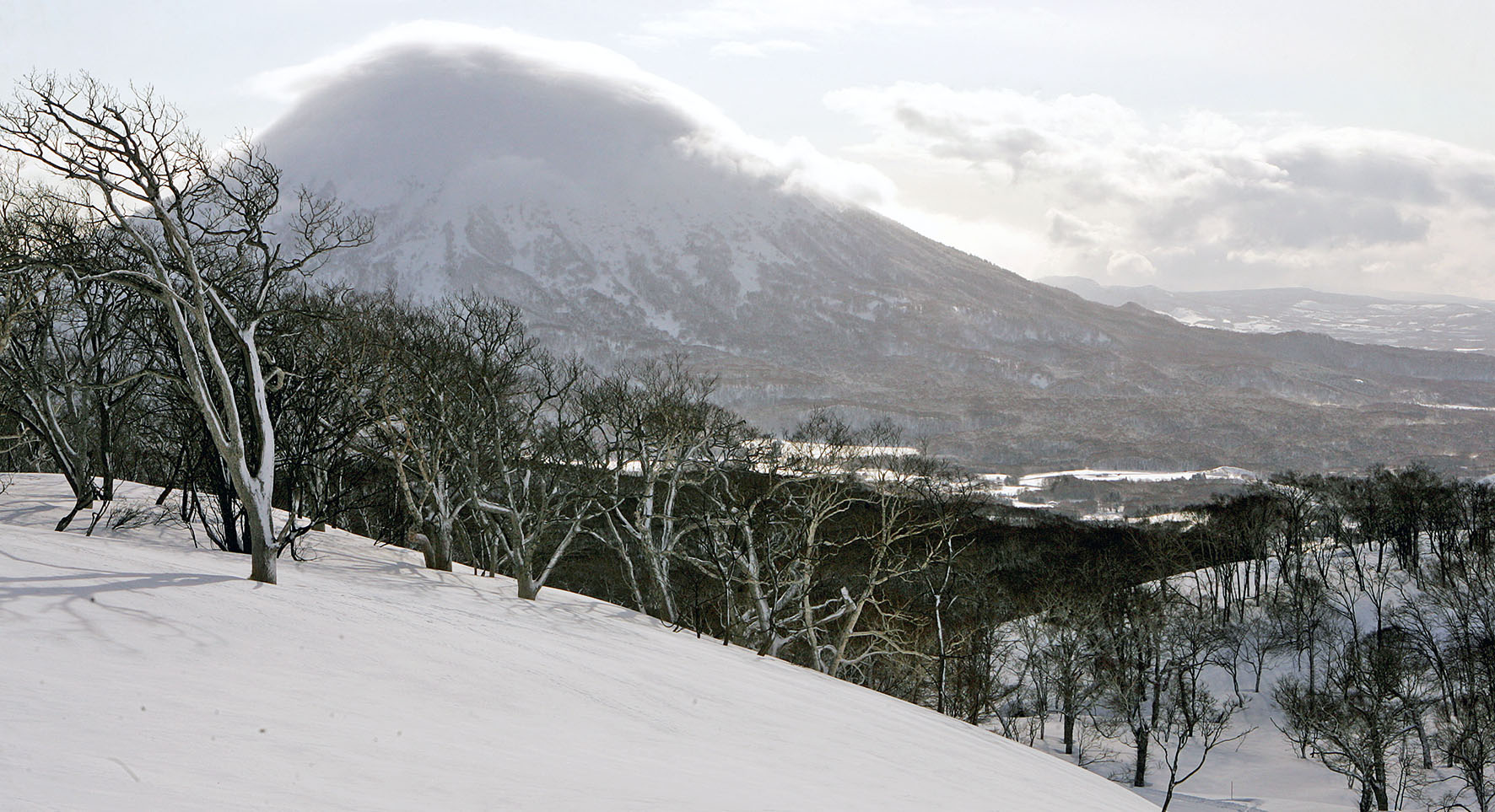
Why are snowflakes hexagonal like the cells of a honeycomb? Are they made by ice bees living in the clouds? Not quite. But, both in the sky and on Earth, the laws of physics are the same.
In preparing to describe snow and how it is formed, let’s put ourselves – obviously only in our imaginations – inside a cloud. At the same time, let’s stick to the scale of the atom, from which we can observe the behaviour of individual molecules of water.
Water is dipole. This means that we can differentiate between the positively and negatively charged ends of the molecule. We know that minus is attracted to plus, so molecules of water tend to clump together. The colder they are, the slower the molecules vibrate, which increases the chances of dipoles grouping together. The atmospheric conditions of a cloud, above all its low temperature, encourage the creation of water molecule groupings.
In order for snowflakes to form, however, we need an impulse.
The appearance of a speck of something, like dust, pollen or bacteria – i.e. a nucleus of condensation – is the impulse that initiates crystallization in a supercooled swarm of molecules. There are methods for the artificial crystallization of clouds, including the atomization of silver iodide particles. The thing that is most amazing about the formation of ice crystals is the process by which they grow. Through electrostatic interactions, successive water molecules attach themselves to the ice crystal. A good analogy is a rolling snowball which, as it increases its surface area, picks up an ever-larger volume of snow. In the same way, the nucleus of condensation attracts more water molecules, thereby increasing its size and mass.
A crystal formed in this way, and already of quite large dimensions, is unable to cheat the Newtonian curse and begins to fall. On the way it meets more water molecules, scattered through the atmosphere, which stick to it, creating an ever more complex structure. The adventures it has on its way to Earth will be different for each flake. Changes of temperature, pressure and humidity create incredible variety in the patterns that are formed. What is common to all of them is the symmetry of the regular hexagon and the similarity of each of the six arms.
Why did mother nature select the hexagon as the ideal shape? This is not due to any principle imposed by some stellar architect, but because this is the most efficient solution.
Unheavenly hexagons
It is good to catch the laws of physics in action – in other words, to conduct an experiment. To do this, we use bubbles. A soap bubble is filled with gas that exerts a constant pressure on the walls and is exactly balanced by the surface tension of the bubble. The optimal shape of the bubble, which is able to keep this gassy mess inside, is a sphere, because it has the greatest ratio of surface area to volume. If we change the shape of the bubble by squeezing it, unless it pops it will return to its original shape, regaining the most efficient form of existence.
A soap bubble will always form into the most durable structure. Moreover, on a complicated lattice structure, it will show the optimal shape of the surface with which to cover the lattice. This phenomenon inspired the German architect Frei Otto in the design of the roofs of his constructions, for example the roof of the Munich Olympiastadion in 1972.
However, let’s return to our experiment. Where are the hexagons in our bubbles? They are on the way. We blow more bubbles of the same size and put them next to each other on a surface. As soon as we have the third bubble in place, we see the formation of characteristic angles of precisely 120°. If we manage to create a mosaic of seven bubbles and examine the one in the middle, we will see a six-sided structure. The angles in a hexagon like this are precisely 120° and are the most optimal way of covering the surface area with bubbles without leaving any free space. (Other shapes that work for this mathematical problem and solution are squares and equilateral triangles, but they are much less common in nature.)
Nature uses this principle at every turn. If we look at the compound eyes sported by insects and some myriapods (like centipedes and millipedes), we see a mosaic of ommatidia, or micro eyes – all hexagonal. This construction maximizes the light-sensitive surface area while simultaneously minimizing the amount of material needed to build the cell walls. Honeycombs are powerful proof that nature doesn’t need mathematical simulations to achieve perfection. It is sufficient for her to rely on the beauty of the laws of physics and, under their guidance, make the most of the available building materials. The cells of a honeycomb start off round, but under the influence of the heat generated by the busy bees, the wax melts, filling in the empty spaces and creating hexagonal shapes.
Snowflakes are formed under completely different conditions than beeswax but, here too, nature works efficiently and cunningly, which also leads to the formation of a hexagonal structure. This is how it works: a molecule of water comprises two atoms of hydrogen and one of oxygen. The oxygen sits in the middle (so it’s more HOH than H2O), and not in a straight line with the hydrogen atoms, but at an angle of around 105°. 105° is already very close to 109.5° and this is crucial, because 109.5° is the angle that occurs in a regular tetrahedron. If we draw a line from the vertices to the centre point of the tetrahedron, they all meet at precisely this angle.
This is also why molecules of water that stick to each other create tetrahedrons, i.e. structures whose faces are equilateral triangles. Equilateral triangles are best grouped together in hexagons, and so it is in a cloud.
A nucleus of condensation takes the shape of duplicated layers of hexagons which, on encountering more water molecules, grow into a complex crystal structure. At first, these are repeats of successive hexagons, but after a while, the water starts to attach to the corners of the hexagon, in accordance with the laws of probability, because it is precisely the protruding vertices of the hexagon that are most likely to encounter HOH. The process by which these molecules attach themselves depends upon the prevailing physical conditions and, since these are similar for each of the hexagon’s vertices, the resulting additions will also be very similar. In this way, we can explain the symmetry of snowflakes (which, if one looks closely, is not perfect. There are minor differences between the arms.)
It is sometimes said that there are no identical snowflakes, and one can assume that this is true. The chance of two identical snowflakes forming is extremely unlikely. Even if both flakes grew in identical conditions, they would be different, because they would each be created around a different nucleus of condensation; one, let’s say, round a tulip pollen, and the other round a bacterium. But that’s not all. If we had two identical nuclei and allowed the flakes to grow in identical conditions, they would still be different. Why?
Protium and deuterium, friends for many years
In order to explain this, we must jump back to the time of the Big Bang. Not all the hydrogen atoms formed then are the same. Some came into the world as the heavier isotope of hydrogen – deuterium. Its nucleus has one proton and an extra neutron that we don’t find in an atom of protium (the usual hydrogen). Water that has a deuterium atom as at least one of its hydrogen atoms (i.e. HDO or D20) is known as heavy water.
Heavy water sticks to ice crystals as readily as normal water but, if one looks closely, one can observe certain differences. The length of the protium bond with oxygen inside the water molecule is 3% longer than a deuterium bond with oxygen. In turn, the bonds between neighbouring molecules are 4% shorter in protium. These are small differences, but they are there.
In normal water, here on Earth, we find one atom of deuterium to approximately 6400 atoms of protium. Therefore, a molecule of HDO occurs more or less once in every 3200 molecules of H20 (and molecules of D2O are significantly rarer – one in 41 million). A small ice crystal may comprise 1018 molecules of water. There are limitless possibilities for locating atoms of heavy water among them. The replacement of even one protium atom for deuterium (or vice versa) changes the structure of a snowflake, albeit minimally. Little snowflake, you can fall in peace. You are unique.
The man who showed the world the immeasurable richness of snowflake forms was the American farmer (and amateur photographer) Wilson Bentley. He connected a camera to a microscope and photographed snowflakes every winter from 1885 to 1931 (when he died). He caught them on a velvet-lined tray and then, with a wooden broom bristle and a turkey feather, transferred the chosen flake onto a chilled slide. So, it was in fact Bentley, after having photographed several thousand snowflakes, who started to suspect that each flake has a unique shape.
Snowflakes resemble fractals, although they are not fractals in the strict sense of the word. A fractal is eternally self-repeating, while a snowflake can be self-repeating within several approximations. When we get down to the molecular level, these similarities are lost. But we should congratulate snowflakes for imitating fractals really rather well. So well in fact that, when the Swedish mathematician Helge von Koch presented one of the first described fractals in 1904, the shape was instantly likened to a snowflake.
If someone wants to draw a snowflake from memory, he or she will probably start by sketching something like a six-pointed, radial cross, and then cut shapes into each arm. However, the use of computerized mathematical modelling gives much better results: the so-called iterative array (or cellular automaton). This algorithm doesn’t start with a six-pointed structure, but draws successive pieces of the flake in different places without any vision or plan, solely on the basis of how the surroundings look from each point. This automaton was designed, several years ago, by the mathematician Cliff Reiter. It is sufficient to set two parameters (‘temperature’ and ‘saturation’), and the flake grows by itself while each point joins the flake or not, without ‘knowing’ anything about what is happening elsewhere. And this is probably the best simulation of what happens in real life. The world is not so much fulfilling the vision imposed on it, as constantly creating itself at every point.
For Wilson Bentley, the shapes of snowflakes were a testament to the love of beauty that the brilliant cosmic architect gave vent to in his work of Creation. Science erases divine agency from natural phenomena. That which was once upon a time evidence of the brilliant intention of the Maker, is today the result of natural evolutionary processes. What was once Zeus’s lightning, is today a difference in electrostatic charges. What we still call today the soul, may tomorrow be summoned into existence in the memory of a supercomputer. A world in which everything is subject to the inexorable balance of probabilities, manifesting itself in the laws of physics, may seem cold and depressing, but admiring reality is an excellent antidote to sadness; a reality so complex, self-sufficient and beautiful, even though it is guided by just a few principles that are the same for every particle. The laws of physics are the best teacher of equal rights.


